
0
+
Google Reviews
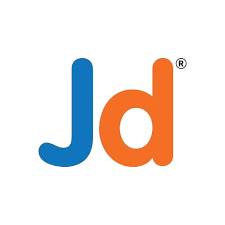
0
+
4.7(2080 Ratings)
The AWS Certified Solutions Architect – Professional certification is a credential offered by Amazon Web Services (AWS) that validates advanced skills and expertise in designing and implementing complex cloud solutions on the AWS platform.. It is a prestigious credential recognized by employers and demonstrates a deep understanding of AWS architecture and services.


Curriculum Designed by Experts
1.1 Determine cross-account authentication and access strategy for complex organizations.
1.2 Determine how to design networks for complex organizations.
1.3 Determine how to design a multi-account AWS environment for complex organizations.
2.1 Determine security requirements and controls when designing and implementing a solution.
2.2 Determine a solution design and implementation strategy to meet reliability requirements.
2.3 Determine a solution design to ensure business continuity.
2.4 Determine a solution design to meet performance objectives.
2.5 Determine a deployment strategy to meet business requirements when designing and implementing a solution.
3.1 Select existing workloads and processes for potential migration to the cloud.
3.2 Select migration tools and/or services for new and migrated solutions based on detailed AWS knowledge.
3.3 Determine a new cloud architecture for an existing solution.
3.4 Determine a strategy for migrating existing on-premises workloads to the cloud.
4.1 Select a cost-effective pricing model for a solution.
4.2 Determine which controls to design and implement that will ensure cost optimization.
4.3 Identify opportunities to reduce cost in an existing architecture.
5.1 Troubleshoot solutions architectures.
5.2 Determine a strategy to improve an existing solution for operational excellence.
5.3 Determine a strategy to improve the reliability of an existing solution.
5.4 Determine a strategy to improve the performance of an existing solution.
5.5 Determine a strategy to improve the security of an existing solution.
5.6 Determine how to improve the deployment of an existing solution.
Enrolling in the Professional Course Training for AWS Certified Solutions Architects equips you with critical cloud architecture, security, and deployment skills on AWS. Gain hands-on expertise in cost optimization, advanced networking, hybrid architecture, and automation to boost your career opportunities.
Earning an AWS Certified Solutions Architect-Professional Course Certification with Training opens doors to high-paying roles like Cloud Architect, DevOps Engineer, and Solutions Architect. This certification is highly valued, offering vast career opportunities in cloud computing and enterprise architecture.
Registration for the AWS Certified Solutions Architects Expert Course Training equips you with key skills for cloud adoption. Learn advanced cloud strategies, migration techniques, and security best practices, making you essential in driving seamless cloud transitions for businesses worldwide.
Registering in the Expert Course Training for AWS Certified Solutions Architects teaches you how to design scalable and flexible cloud solutions. Master AWS tools to build systems that scale seamlessly, optimize performance, and adjust to changing company requirements to ensure long-term success in cloud settings.
Enrollment in the expert course training for AWS Certified Solutions Architects equips you with the expertise to design highly scalable and flexible cloud solutions. Learn how to use AWS services to build architectures that automatically scale, ensuring optimal performance and adapting to growing business demands.
Enrolling in AWS Certified Solutions Architect-Professional Course Trainingprovides advanced knowledge in security and compliance. Learn to implement encryption, manage data protection, and meet regulatory standards, ensuring secure and compliant cloud architectures for businesses across industries.
Radical Technologies is the leading IT certification institute in Pune, offering a wide range of globally recognized certifications across various domains. With expert trainers and comprehensive course materials, it ensures that students gain in-depth knowledge and hands-on experience to excel in their careers. The institute’s certification programs are tailored to meet industry standards, helping professionals enhance their skillsets and boost their career prospects. From cloud technologies to data science, Radical Technologies covers it all, empowering individuals to stay ahead in the ever-evolving tech landscape. Achieve your professional goals with certifications that matter.
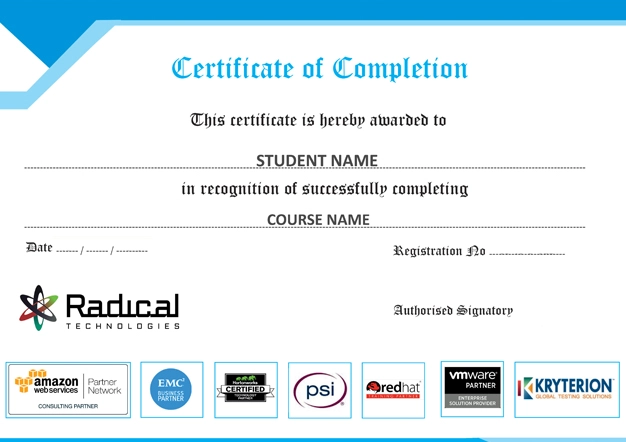


At Radical Technologies, we are committed to your success beyond the classroom. Our 100% Job Assistance program ensures that you are not only equipped with industry-relevant skills but also guided through the job placement process. With personalized resume building, interview preparation, and access to our extensive network of hiring partners, we help you take the next step confidently into your IT career. Join us and let your journey to a successful future begin with the right support.
At Radical Technologies, we ensure you’re ready to shine in any interview. Our comprehensive Interview Preparation program includes mock interviews, expert feedback, and tailored coaching sessions to build your confidence. Learn how to effectively communicate your skills, handle technical questions, and make a lasting impression on potential employers. With our guidance, you’ll walk into your interviews prepared and poised for success.
At Radical Technologies, we believe that a strong professional profile is key to standing out in the competitive IT industry. Our Profile Building services are designed to highlight your unique skills and experiences, crafting a resume and LinkedIn profile that resonate with employers. From tailored advice on showcasing your strengths to tips on optimizing your online presence, we provide the tools you need to make a lasting impression. Let us help you build a profile that opens doors to your dream career.

Infrastructure Provisioning
Implementing automated infrastructure provisioning and configuration management using Ansible. This may include setting up servers, networking devices, and other infrastructure components using playbooks and roles.

Applications Deployment
Automating the deployment and orchestration of applications across development, testing, and production environments. This could involve deploying web servers, databases. middleware, and other application components using Ansible

Continuous Integration
Integrating Ansible into CI/CD pipelines to automate software. build, test, and deployment processes. This may include automating the creation of build artifacts, running tests, and deploying applications to various environments.

The AWS Solution Architect course at Radical Technologies transformed my understanding of cloud computing. The hands-on labs made complex concepts easy to grasp.
I highly recommend Radical Technologies for AWS Solution Architect training. The instructors are knowledgeable and supportive, making learning enjoyable.
Thanks to Radical Technologies, I passed my AWS Solution Architect exam with flying colors. The comprehensive curriculum and practical exercises were invaluable.
Radical Technologies exceeded my expectations with their AWS Solution Architect course. I feel confident in my ability to design robust cloud architectures.
The job placement assistance provided by Radical Technologies was a game-changer for me. I landed my dream job as an AWS Solution Architect shortly after completing the course.
I'm grateful for the real-world insights shared by the instructors at Radical Technologies. Their industry experience added immense value to the course.
The flexibility of the online AWS Solution Architect training allowed me to balance my studies with my work schedule. It was the perfect fit for my busy lifestyle.
Radical Technologies' AWS Solution Architect course not only prepared me for the certification exam but also equipped me with practical skills I use in my job every day.
The support and encouragement from the Radical Technologies team kept me motivated throughout the AWS Solution Architect course. I couldn't have done it without them.
I was hesitant about transitioning to a career in cloud computing, but Radical Technologies made the process seamless. The instructors guided me every step of the way.
The hands-on experience gained during the AWS Solution Architect training was invaluable. I now feel confident tackling real-world cloud projects.
I chose Radical Technologies for AWS Solution Architect training based on recommendations, and I'm glad I did. The course exceeded my expectations in every way.
Radical Technologies' AWS Solution Architect course provided me with a solid foundation in cloud computing. I'm excited to apply what I've learned in my career.
The interactive nature of the AWS Solution Architect classes at Radical Technologies made learning enjoyable. I looked forward to every session.
The practical approach to learning at Radical Technologies made all the difference. I feel well-prepared to tackle the challenges of working as an AWS Solution Architect.
I appreciate the personalized attention I received at Radical Technologies. The instructors took the time to address my questions and ensure I understood the material.
Radical Technologies' AWS Solution Architect course covers everything you need to know to succeed in the field. I couldn't have asked for a better learning experience.
The skills I gained from Radical Technologies' AWS Solution Architect training opened up new opportunities for me. I'm excited to see where this career path takes me.
I was initially intimidated by the AWS Solution Architect certification exam, but Radical Technologies' training instilled me with confidence. I passed on my first attempt!
The support network at Radical Technologies is exceptional. I connected with fellow students and instructors who shared my passion for cloud computing.
Radical Technologies' AWS Solution Architect course strikes the perfect balance between theory and practice. I feel well-equipped to tackle real-world challenges.
The instructors at Radical Technologies go above and beyond to ensure student success. Their dedication is truly inspiring.
The AWS Solution Architect training at Radical Technologies gave me the skills and confidence to pursue my dream job. I'm excited to embark on this new career path.
I appreciated the flexibility of Radical Technologies' AWS Solution Architect course. I could learn at my own pace without feeling rushed or overwhelmed.
The practical projects assigned during the AWS Solution Architect training were a highlight for me. They allowed me to apply what I learned in a real-world context and build my portfolio.








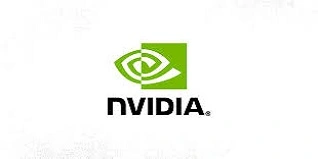
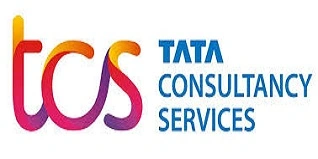
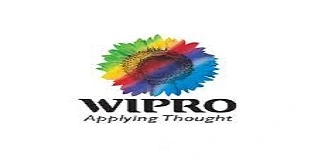


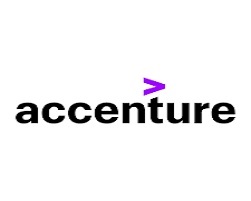
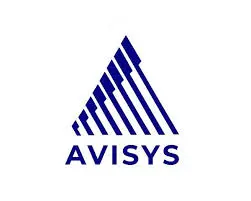
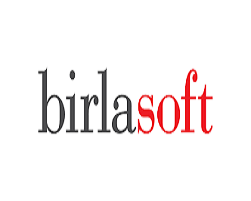




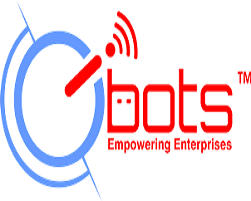
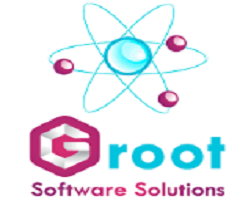



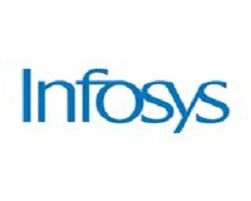
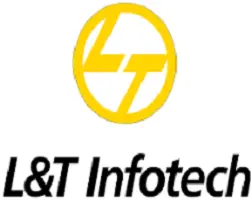
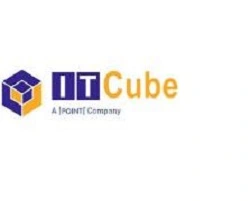

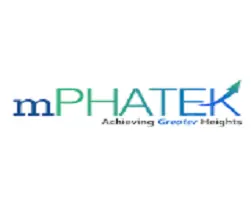
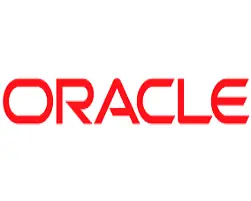



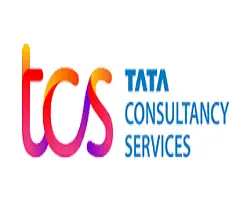


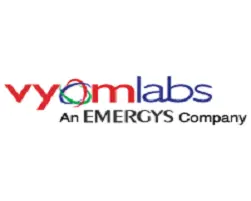
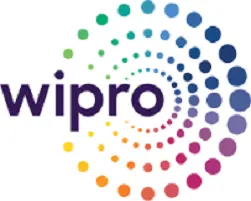
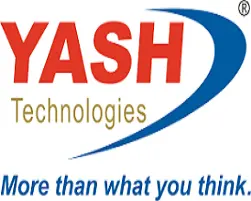
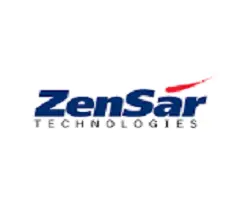
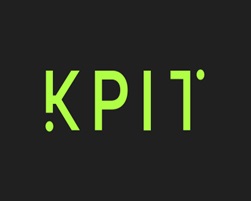

AWS Solution Architect Certification validates expertise in designing distributed systems on AWS. It assesses skills in architecting and deploying scalable, highly available, and fault-tolerant systems.
You can enroll in an AWS Solution Architect Course by contacting Radical Technologies in Pune or through their online registration portal
AWS Solution Architect Training covers a range of topics including AWS services overview, architectural best practices, designing resilient architectures, cost optimization strategies, and security practices on AWS.
The cost of AWS Solution Architect Certification varies depending on the level of certification. You can find the latest pricing on the official AWS Certification website.
Yes, Radical Technologies offers online AWS Solution Architect Training for those who prefer remote learning.
The best AWS Solutions Architect Course is one that aligns with your learning preferences, covers the necessary topics comprehensively, and provides hands-on experience with AWS services.
You can find AWS Certified Solutions Architect Training at Radical Technologies in Pune or through online platforms offering AWS training.
The duration of an AWS Solution Architect Certification course varies depending on the training provider and the depth of coverage. Typically, it ranges from a few weeks to a couple of months.
The cost of AWS Solution Architect Certification in India is usually the same as the global pricing. However, it’s best to check the current pricing on the official AWS Certification website.
Yes, Radical Technologies offers AWS Solution Architect Professional Training to help professionals advance their skills and expertise in architecting complex AWS solutions.
You can register for AWS Certified Solutions Architect Certification through the AWS Training and Certification portal.
The prerequisites for AWS Solutions Architect Professional Course usually include having prior experience with AWS services and holding the Associate-level Solutions Architect certification.
You can find AWS Solution Architect Training near you by searching online for training institutes or consulting Radical Technologies for their nearest location.
Amazon Cloud Architect Certification is another term for AWS Solution Architect Certification, which validates expertise in designing cloud-based solutions on the AWS platform.
You can prepare for AWS Architect Certification by taking a comprehensive training course, studying AWS documentation, practicing with hands-on labs, and taking practice exams.
Ambegaon Budruk | Aundh | Baner | Bavdhan Khurd | Bavdhan Budruk | Balewadi | Shivajinagar | Bibvewadi | Bhugaon | Bhukum | Dhankawadi | Dhanori | Dhayari | Erandwane | Fursungi | Ghorpadi | Hadapsar | Hingne Khurd | Karve Nagar | Kalas | Katraj | Khadki | Kharadi | Kondhwa | Koregaon Park | Kothrud | Lohagaon | Manjri | Markal | Mohammed Wadi | Mundhwa | Nanded | Parvati (Parvati Hill) | Panmala | Pashan | Pirangut | Shivane | Sus | Undri | Vishrantwadi | Vitthalwadi | Vadgaon Khurd | Vadgaon Budruk | Vadgaon Sheri | Wagholi | Wanwadi | Warje | Yerwada | Akurdi | Bhosari | Chakan | Charholi Budruk | Chikhli | Chimbali | Chinchwad | Dapodi | Dehu Road | Dighi | Dudulgaon | Hinjawadi | Kalewadi | Kasarwadi | Maan | Moshi | Phugewadi | Pimple Gurav | Pimple Nilakh | Pimple Saudagar | Pimpri | Ravet | Rahatani | Sangvi | Talawade | Tathawade | Thergaon | Wakad
I had an amazing experience with this service. The team was incredibly supportive and attentive to my needs. The quality of the work exceeded my expectations. I would highly recommend this to anyone looking for reliable and professional service."
I had an amazing experience with this service. The team was incredibly supportive and attentive to my needs. The quality of the work exceeded my expectations. I would highly recommend this to anyone looking for reliable and professional service."
I had an amazing experience with this service. The team was incredibly supportive and attentive to my needs. The quality of the work exceeded my expectations. I would highly recommend this to anyone looking for reliable and professional service."
I had an amazing experience with this service. The team was incredibly supportive and attentive to my needs. The quality of the work exceeded my expectations. I would highly recommend this to anyone looking for reliable and professional service."
I had an amazing experience with this service. The team was incredibly supportive and attentive to my needs. The quality of the work exceeded my expectations. I would highly recommend this to anyone looking for reliable and professional service."
Elevate Your Cloud Expertise with AWS Certified Solutions Architect – Professional Training
Achieving the AWS Certified Solutions Architect – Professional certification is a prestigious milestone for IT professionals aiming to build advanced cloud solutions. This training is designed to enhance your architectural skills, ensuring you become proficient in designing secure, high-performing, cost-efficient, and scalable systems on the Amazon Web Services (AWS) platform. Whether you’re an experienced Solutions Architect or aspiring to level up your cloud knowledge, this program offers comprehensive guidance and hands-on experience.
The AWS Certified Solutions Architect – Professional (SAP-C02) training program offers advanced knowledge and real-world problem-solving skills required to excel in the cloud architecture domain. This course focuses on equipping participants with the ability to design and deploy dynamic, resilient, and scalable cloud-based applications on AWS.
The AWS Certified Solutions Architect – Professional training is ideal for:
1.Comprehensive Curriculum:
2.Expert-Led Training:
3.Hands-On Labs and Projects:
4.Mock Exams and Assessment Quizzes:
5.AWS Certification Exam Voucher:
The AWS Certified Solutions Architect – Professional certification equips cloud professionals with advanced skills to design, deploy, and manage complex, scalable, and secure architectures on Amazon Web Services (AWS). The expertise gained through this certification has diverse applications across industries, helping businesses leverage cloud infrastructure efficiently. Below are the top applications of AWS Certified Solutions Architect – Professional, highlighting its significance in real-world scenarios.
1. Enterprise Cloud Architecture Design
Certified professionals use their expertise to design scalable and high-performing architectures for enterprises. They develop systems that can handle varying workloads and traffic efficiently, ensuring seamless business operations.
Key Use Cases:
Designing multi-region, multi-AZ (Availability Zone) architectures for high availability.
Implementing serverless solutions using AWS Lambda and Amazon API Gateway to reduce operational overhead.
Optimizing costs by leveraging Amazon EC2 Auto Scaling and Elastic Load Balancers (ELB).
2. Cloud Migration and Modernization
AWS Certified Solutions Architects play a pivotal role in cloud migration projects, helping organizations transition from on-premise infrastructure to the cloud. They develop and execute migration strategies while minimizing downtime and ensuring data security.
Key Use Cases:
Planning Lift-and-Shift migrations or replatforming legacy applications.
Utilizing AWS Database Migration Service (DMS) for seamless database migration.
Integrating hybrid cloud solutions with AWS Outposts or VPNs for smooth transitions.
3. Building Highly Available and Fault-Tolerant Systems
With deep knowledge of AWS services, certified professionals design systems that guarantee maximum uptime through redundancy and failover mechanisms. These architectures ensure business continuity even in the event of system failures.
Key Use Cases:
Implementing disaster recovery (DR) strategies with AWS Backup and Amazon S3 Glacier.
Creating fault-tolerant environments with multi-AZ deployments.
Automating failovers with Route 53 health checks and Amazon RDS Multi-AZ setups.
4. Security and Compliance Management
The AWS Certified Solutions Architect – Professional certification emphasizes the importance of cloud security and compliance frameworks. Professionals design solutions with stringent security controls to protect sensitive data and meet industry compliance standards.
Key Use Cases:
Managing secure access with Identity and Access Management (IAM) roles and policies.
Encrypting data at rest and in transit using AWS KMS and TLS protocols.
Ensuring compliance with standards like GDPR, HIPAA, and PCI DSS.
5. Application Development with DevOps and Automation
Certified architects leverage their understanding of DevOps tools and automation frameworks to streamline application development. They use Infrastructure as Code (IaC) to automate the provisioning of resources and deploy applications with minimal downtime.
Key Use Cases:
Automating deployments with AWS CloudFormation and CodePipeline.
Enabling continuous integration/continuous deployment (CI/CD) with CodeBuild and CodeDeploy.
Monitoring application performance in real-time using CloudWatch and AWS X-Ray.
6. Cost Optimization and Resource Management
AWS Certified Solutions Architects ensure that cloud environments are both performance-optimized and cost-efficient. They recommend the best practices for reducing unnecessary cloud expenses while maintaining high system performance.
Key Use Cases:
Right-sizing workloads with AWS Trusted Advisor recommendations.
Automating resource management using EC2 Spot Instances and Savings Plans.
Identifying and terminating unused resources with Cost Explorer and CloudTrail logs.
7. Data Analytics and Big Data Solutions
Certified professionals design data architectures that handle big data workloads efficiently. They develop solutions that process, analyze, and store large datasets, empowering businesses to make data-driven decisions.
Key Use Cases:
Setting up data lakes using Amazon S3 and AWS Glue.
Implementing real-time analytics with Kinesis Data Streams and Redshift.
Architecting ETL pipelines for big data workloads using AWS Lambda and Athena.
8. IoT and Smart Solutions Architecture
The AWS IoT ecosystem provides tools for developing Internet of Things (IoT) solutions. Certified architects design and implement IoT architectures that connect devices, collect data, and perform analytics at the edge or in the cloud.
Key Use Cases:
Architecting smart solutions using AWS IoT Core and Greengrass.
Managing IoT data streams with AWS IoT Analytics.
Ensuring secure communication between devices with IoT security policies.
9. Implementing AI/ML Solutions on AWS
Certified AWS architects design frameworks for deploying machine learning (ML) and artificial intelligence (AI) solutions. They integrate AWS AI/ML services to enhance business capabilities, automate processes, and deliver personalized customer experiences.
Key Use Cases:
Building and training ML models using Amazon SageMaker.
Deploying chatbots and virtual assistants with Amazon Lex and Amazon Polly.
Enabling predictive analytics with AWS Forecast and Personalize.
10. Supporting Startups and New Ventures
Startups rely on AWS’s scalable infrastructure to grow quickly. Certified professionals help startups design cloud environments that are cost-efficient, scalable, and resilient to support rapid business expansion.
Key Use Cases:
Implementing pay-as-you-go infrastructure to manage fluctuating workloads.
Building MVPs (Minimum Viable Products) using serverless architectures for cost efficiency.
Scaling applications globally using CloudFront and AWS Global Accelerator.
At Radical Technologies, we pride ourselves on being a premier institute in Pune dedicated to providing comprehensive training in AWS Solution Architect courses. With a focus on delivering high-quality education and practical skills, we offer AWS Solution Architect Classes that cover all aspects of designing, deploying, and managing solutions on the Amazon Web Services (AWS) platform.
Our AWS Solution Architect Training program is meticulously designed to equip individuals with the knowledge and expertise needed to excel in this field. Whether you’re a beginner looking to start your journey in cloud computing or an experienced professional seeking to enhance your skills, our courses cater to all levels of proficiency.
At Radical Technologies, we understand the importance of hands-on learning. That’s why our AWS Solution Architect Certification Training includes practical labs, real-world case studies, and interactive sessions to ensure that students gain practical experience alongside theoretical knowledge. We believe that this approach not only reinforces learning but also prepares individuals for the challenges they may encounter in their professional careers.
One of our key priorities is to assist our students in obtaining AWS Solution Architect Certifications. We offer guidance and support throughout the certification process, helping individuals prepare effectively and confidently for the exams. Additionally, our AWS Solution Architect Training includes job placement assistance, connecting qualified candidates with leading organizations seeking skilled AWS professionals.
Our team comprises experienced industry professionals and certified AWS experts who are passionate about sharing their knowledge and expertise with aspiring cloud architects. With a commitment to excellence and innovation, we continuously update our curriculum to reflect the latest advancements in AWS technology and best practices.
Whether you’re looking to embark on a career in cloud computing, advance your existing skills, or stay ahead in this rapidly evolving field, Radical Technologies is here to empower you with the tools and knowledge you need to succeed. Join us today and unlock your potential in the world of AWS Solution Architecture.
With years of expertise, we offer AWS Certified Solutions Architect – Professional Training In Bangalore through well-structured classes, live projects, and practical exposure. Whether you’re a working professional or a fresh graduate, our AWS Certified Solutions Architect – Professional Classes In Bangalore are designed to equip you with the knowledge and skills necessary to excel in cloud architecture.
We provide flexible learning options, including AWS Certified Solutions Architect – Professional Online Course In Bangalore, allowing students to attend training from the comfort of their homes. Our AWS Certified Solutions Architect – Professional Online Training In Bangalore includes interactive sessions, real-world case studies, and exam preparation to ensure students are fully prepared for the AWS Certified Solutions Architect – Professional Certification In Bangalore.
Radical Technologies is recognized as a trusted AWS Certified Solutions Architect – Professional Institute In Bangalore. Our certified trainers, with extensive industry experience, focus on delivering the best course for AWS Solution Architect Professional. Whether you are looking for AWS Architect Professional Training or the AWS Solution Architect Professional Course, we ensure a comprehensive learning experience, combining theory and practice.
Our AWS Solutions Architect Training And Placement program is tailored to meet industry demands, with an excellent track record of placements. If you are searching for AWS Certified Solutions Architect Training Near Me or AWS Solution Architect Training Near Me, Radical Technologies offers the best combination of expert guidance, practical labs, and placement assistance.
We offer both classroom and online training options for those who prefer flexibility. Our AWS Solution Architect Training Online ensures participants receive the best online training for AWS Solution Architect with access to learning resources and mentor support at all times. Whether you join our AWS Certified Solutions Architect Professional Course Online or our in-person sessions, our trainers provide continuous support to help students succeed.
The AWS Solutions Architect Certification Training Course at Radical Technologies is perfect for both beginners and professionals looking to enhance their career prospects. We guide students through AWS Solution Architect Certification Training and help them prepare for the exam with mock tests and hands-on exercises.
Choose Radical Technologies, Bangalore, for the AWS Solutions Architect Professional Course and advance your career with our AWS Certified Solutions Architect Online Training. Whether you want to pursue AWS Architect Certification Course or need a complete AWS Solution Architect Professional Training program, we are committed to offering a world-class learning experience.
Radical Technologies provides the best online course for AWS Solution Architect Professional, preparing you for both the certification and practical challenges of cloud architecture. If you’re searching for AWS Solution Architect Training And Certification, Radical Technologies is the ultimate destination to achieve your goals.
Start your cloud journey today with the AWS Solutions Architect Course at Radical Technologies, Bangalore, and take your career to new heights.

(Our Team will call you to discuss the Fees)
